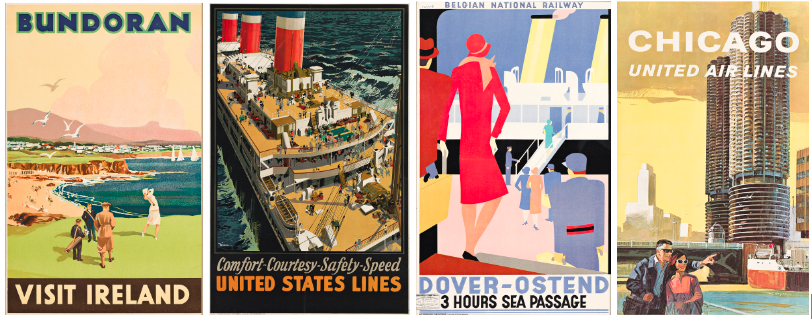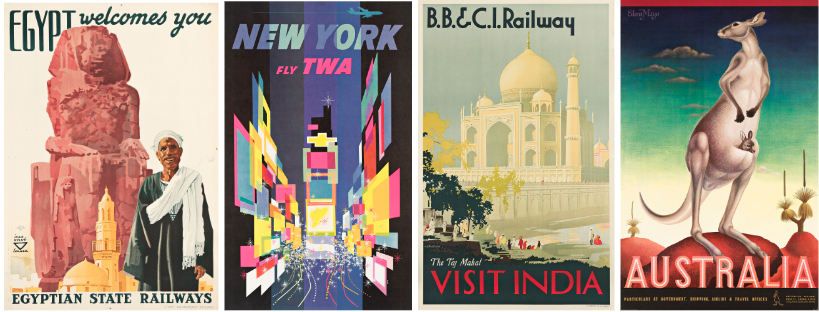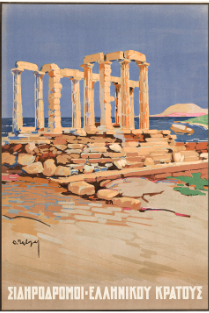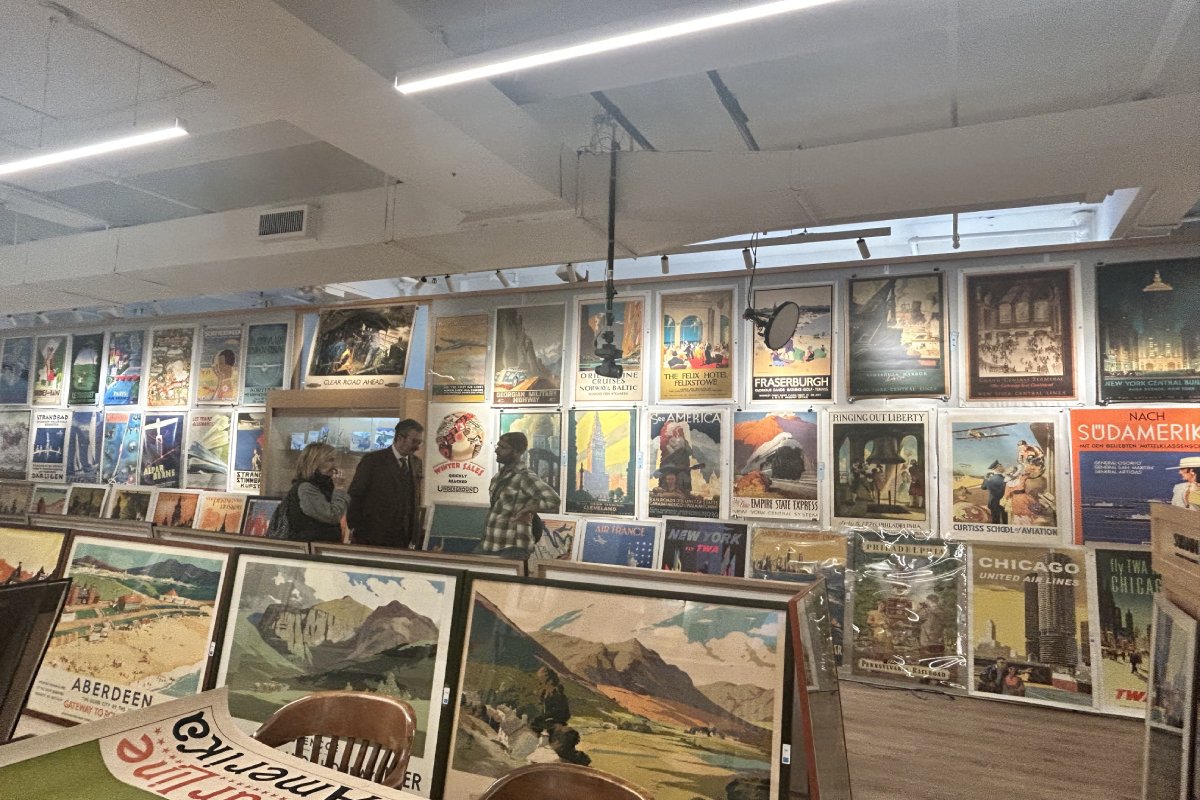Skift Take
These nearly 300 vintage travel posters tell us companies will always chase the middle class and destinations will always win over tourists with their oldest sightseeing attractions.
In 50 years, tourists will visit the same famous attractions they went to a century before. Companies will invest in marketing for countries where there’s a rising middle class and access. Those are two patterns I noticed when I explored a collection of nearly 300 vintage travel posters at New York City’s Swann Auction Galleries.
Nicholas D. Lowry, the director, gave me a tour of the collection in advance of an auction Thursday. Some of the posters go back as late as the 1890s. Many are valued at over a $1,000 – the most expensive is a travel promotion for Atlantic City valued between $10,000 and $15,000.
Australia, Italy, Scotland, Canada, Poland, Egypt, India and other countries are represented. The posters were paid for by airlines, railroad companies, cruise lines, hotels, tourism bureaus and at least one tour operator. Many of the businesses like Pan Am and TWA are long gone, while others like Air India, United Airlines, and Air France are going strong.
Travel Marketers Follow the Middle Class
Travel companies targeted the new middle classes of the West. “They are all dealing [with] the middle class. The upper classes didn’t need to be advertised to,” said Lowry. “It’s like, if you can afford a Rolls Royce, you don’t need to see an ad to be like ‘I need a Royal Royce.’”
After the industrial revolution, this class expanded and had more money to spend on travel. More destinations became easier to reach.

We are seeing this pattern today with companies targeting emerging outbound markets like India. The country’s middle class is expanding and airlines are adding nonstop flights and weekly service to new international destinations.
The U.S. tourism industry is chasing the Indian traveler. “Where we’re looking to grow is India, it has so much opportunity and potential,” said Fred Dixon, CEO and president of NYC Tourism + Conventions. “Air connectivity was always a concern with India, one of the things that was holding us back, and now we think that’s going to accelerate in the years to come.”
‘Touristy‘ Attractions Will Dominate the Public Imagination
Designers made the posters be colorful enough to “catch your eye quickly as you walk by and impart the message right away” on the street or a train platform, said Lowry.
Many companies simply advertised a destination’s world-renowned attractions: Egypt’s ancient statues, India’s Taj Mahal, Australia’s kangaroos, and New York City’s Statue of Liberty and Times Square.

Companies promoted famous attractions even if they didn’t travel to them. A Greek rail company advertised the famous Temple of Poseidon even though it didn’t stop there. “This is basically what Greece is,” said Lowry. “We’re a railroad company, we’re showing Greece, but you’ll have to take a bus.”

Skift India Report
The Skift India Report is your go-to newsletter for all news related to travel, tourism, airlines, and hospitality in India.
Have a confidential tip for Skift? Get in touch
Tags: air france, australia, destination markeing, egypt, india, new york city, tourism

